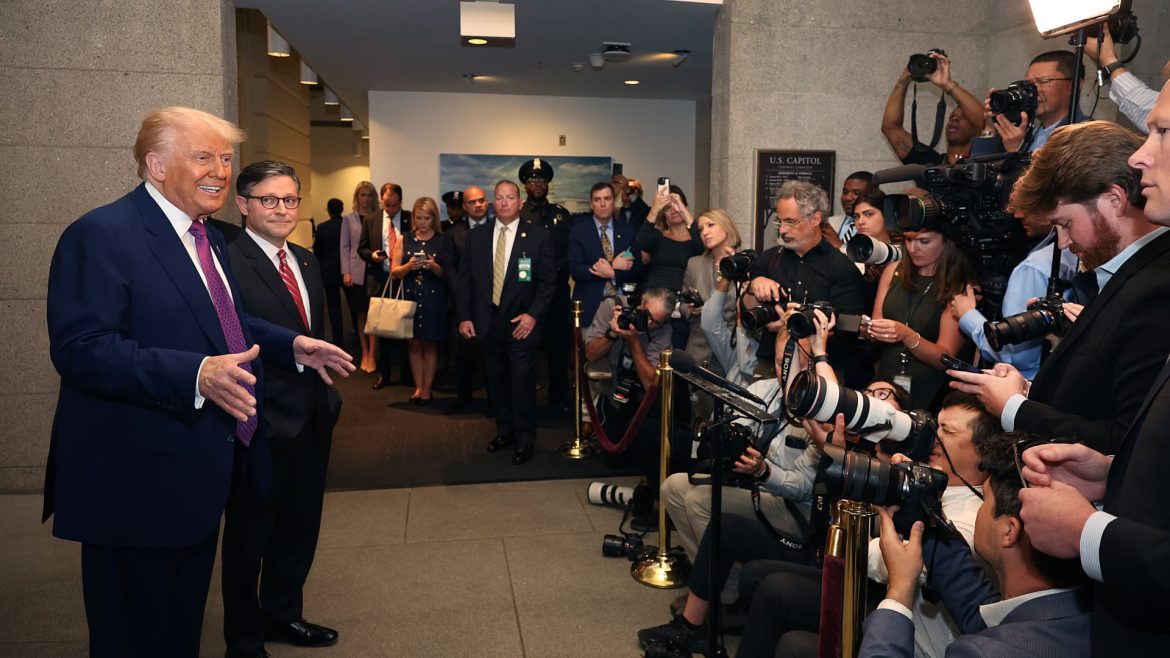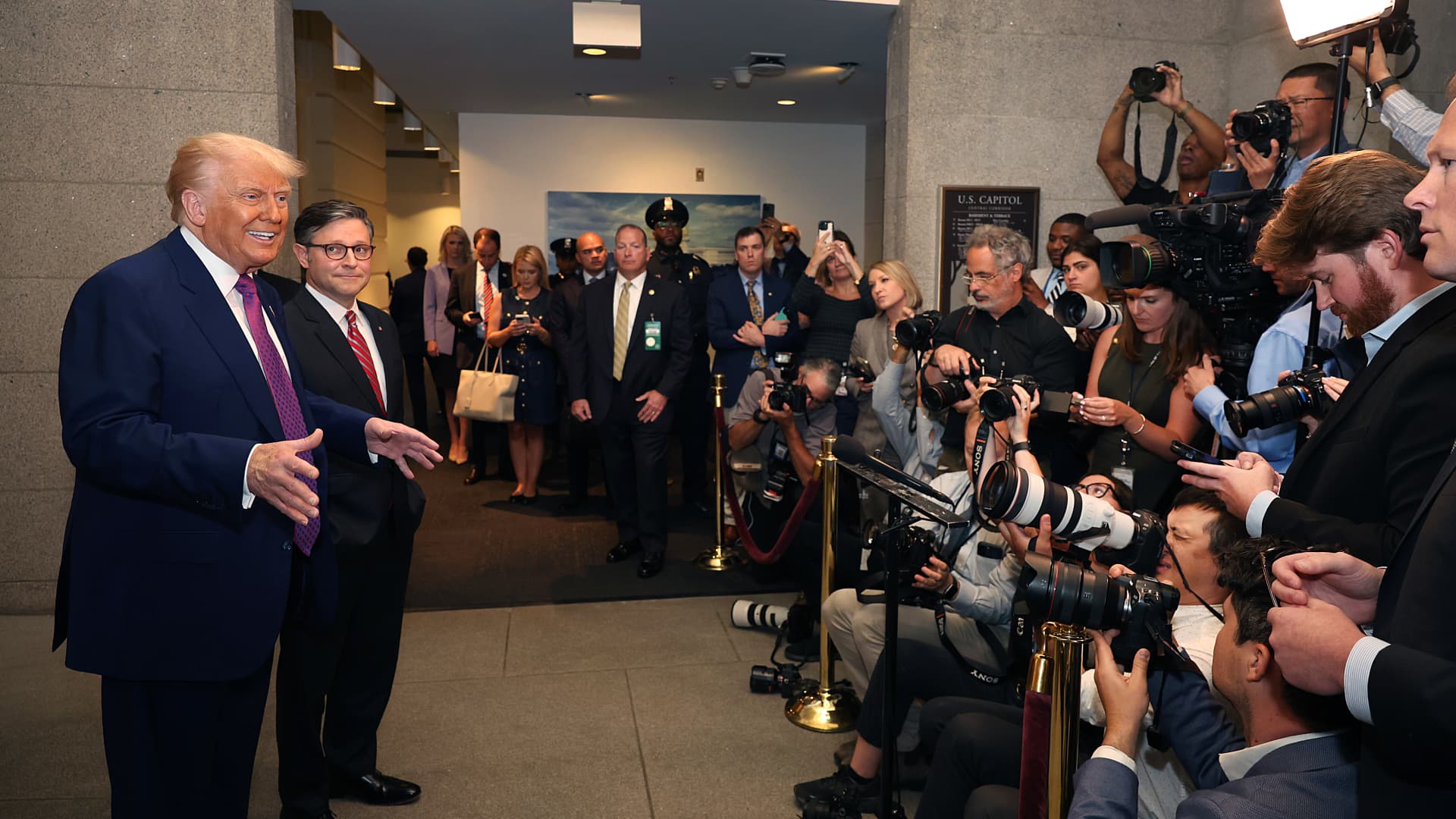Understanding the Concept of the “Trump Put” in U.S. Markets
The term “Trump put” refers to the idea that President Donald Trump’s policies, particularly fiscal and trade measures, would act as a backstop or support mechanism to prevent steep market downturns, much like a put option limits downside risk in financial markets. Investors speculated that Trump’s interventions—through tax cuts, trade agreements, or fiscal stimulus—would sustain or boost stocks even amid broader economic challenges. However, recent market dynamics and growing fiscal concerns have made this notion increasingly difficult to maintain.
—
The Rising U.S. Fiscal Deficit and Market Reactions
One of the core challenges undermining the “Trump put” concept is the ballooning U.S. deficit. The tax bill passed during Trump’s administration, along with increased government spending, is projected to add between $3 trillion and $5 trillion to the national debt. This sharp increase in fiscal deficits has heightened investor wariness.
Markets have responded with notable volatility. On multiple occasions, major U.S. benchmarks such as the S&P 500 and Dow Jones Industrial Average have tumbled, reflecting fears of deteriorating fiscal health. For example, there was a 1.61% drop in the S&P 500 during one sell-off, indicating significant investor nervousness over the sustainability of fiscal policy and its long-term consequences.
The increase in government borrowing drives up Treasury yields, as supply pressures bond markets. Yields crossing key thresholds—like the 5% yield on 30-year Treasuries—signal an increased cost of government debt and can pressurize equity valuations negatively. This scenario challenges the prior assumption that government policy would shield markets from meaningful downturns.
—
Trade Agreements and Their Role: Temporary Market Relief?
The resurrection of the “Trump put” idea briefly occurred around the announcement of the U.S.-China trade agreement. Markets showed optimism as the S&P 500 surpassed key technical resistance levels following the deal. The agreement was seen as a de-escalation in trade tensions, which is important for risk appetites given the global trade uncertainty.
Yet, despite this positive development, the relief was short-lived. The execution of tariffs, heightened geopolitical uncertainty, and inconsistent policy signals have kept markets on edge. The trade deal alone has not offset the concerns posed by rising deficits and a shifting economic landscape, thus limiting the efficacy of a “Trump put.”
—
Political and Regulatory Environment: Adding to Market Uncertainty
Trump’s confrontations with key financial institutions, especially the Federal Reserve, have added further layers of uncertainty. For instance, his escalating attacks on Federal Reserve Chair Jerome Powell coincided with declines in U.S. stocks and the U.S. dollar, while safe-haven assets like gold reached fresh highs.
Additionally, potential changes to regulatory bodies, such as sweeping reforms to the U.S. State Department, introduce unpredictability in foreign policy and economic relations, impacting investor confidence.
—
Broader Market Implications: From “Magnificent Seven” to Global Spillovers
The influence of Trump-era policies manifests in specific sectors, too. The so-called “Magnificent Seven” technology stocks collectively lost over $1 trillion in market capitalization during a notable trading session, reflecting investors’ shifting sentiment away from previously high-flying assets.
Internationally, markets have mirrored the U.S. trends. Asia-Pacific equities have declined in step with Wall Street’s sell-offs, indicating a global risk-off mentality. Currency markets have also responded, with the euro and British pound strengthening against the dollar in response to U.S. policy signals.
—
Conclusion: The Waning Viability of a “Trump Put”
The initial belief that the Trump administration’s fiscal and trade policies would act as a protective floor under U.S. markets has diminished considerably. Soaring deficits, rising debt costs, contentious political dynamics, and uneven trade developments have created an environment where it is “hard to imagine a ‘Trump put’” effectively preventing deficit-induced sell-offs.
Investors now face a more complex backdrop where traditional expectations of market support from government actions are tempered by the realities of fiscal sustainability and geopolitical volatility. Market participants must recalibrate risk assessments without assuming automatic policy interventions will shield against downturns, recognizing the evolving interplay of economic fundamentals and political factors shaping U.S. and global markets.





